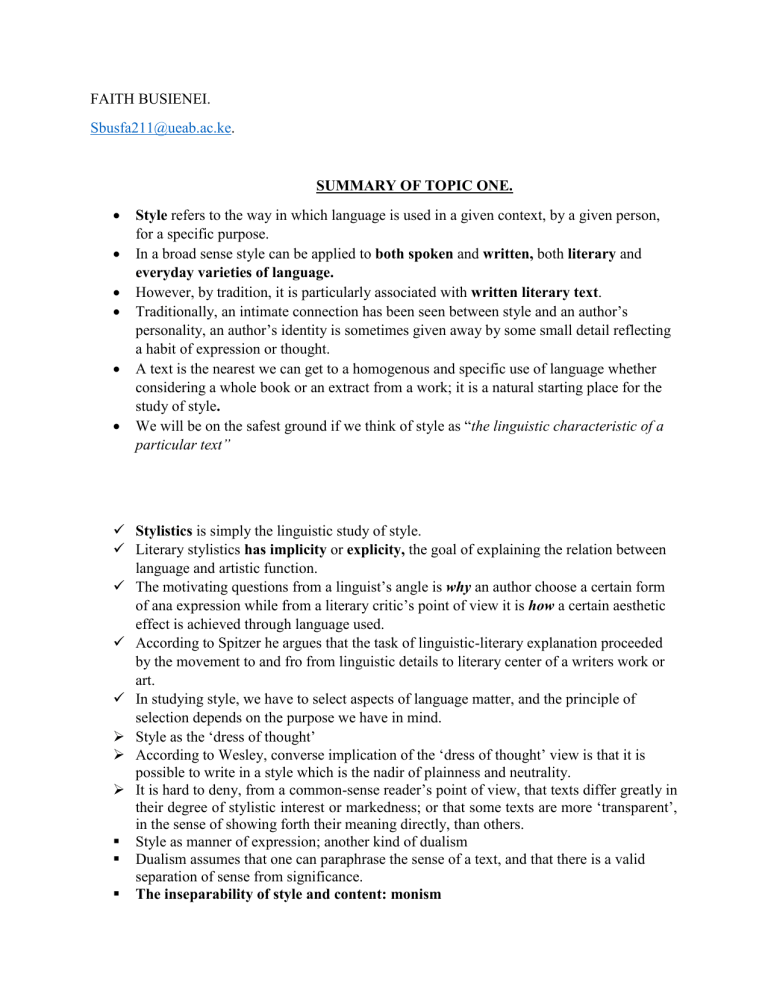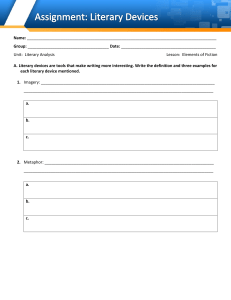
FAITH BUSIENEI. Sbusfa211@ueab.ac.ke. SUMMARY OF TOPIC ONE. Style refers to the way in which language is used in a given context, by a given person, for a specific purpose. In a broad sense style can be applied to both spoken and written, both literary and everyday varieties of language. However, by tradition, it is particularly associated with written literary text. Traditionally, an intimate connection has been seen between style and an author’s personality, an author’s identity is sometimes given away by some small detail reflecting a habit of expression or thought. A text is the nearest we can get to a homogenous and specific use of language whether considering a whole book or an extract from a work; it is a natural starting place for the study of style. We will be on the safest ground if we think of style as “the linguistic characteristic of a particular text” Stylistics is simply the linguistic study of style. Literary stylistics has implicity or explicity, the goal of explaining the relation between language and artistic function. The motivating questions from a linguist’s angle is why an author choose a certain form of ana expression while from a literary critic’s point of view it is how a certain aesthetic effect is achieved through language used. According to Spitzer he argues that the task of linguistic-literary explanation proceeded by the movement to and fro from linguistic details to literary center of a writers work or art. In studying style, we have to select aspects of language matter, and the principle of selection depends on the purpose we have in mind. Style as the ‘dress of thought’ According to Wesley, converse implication of the ‘dress of thought’ view is that it is possible to write in a style which is the nadir of plainness and neutrality. It is hard to deny, from a common-sense reader’s point of view, that texts differ greatly in their degree of stylistic interest or markedness; or that some texts are more ‘transparent’, in the sense of showing forth their meaning directly, than others. Style as manner of expression; another kind of dualism Dualism assumes that one can paraphrase the sense of a text, and that there is a valid separation of sense from significance. The inseparability of style and content: monism The dualist’s notion of paraphrase rests on the assumption that there is some basic sense that can be preserved in different renderings.





